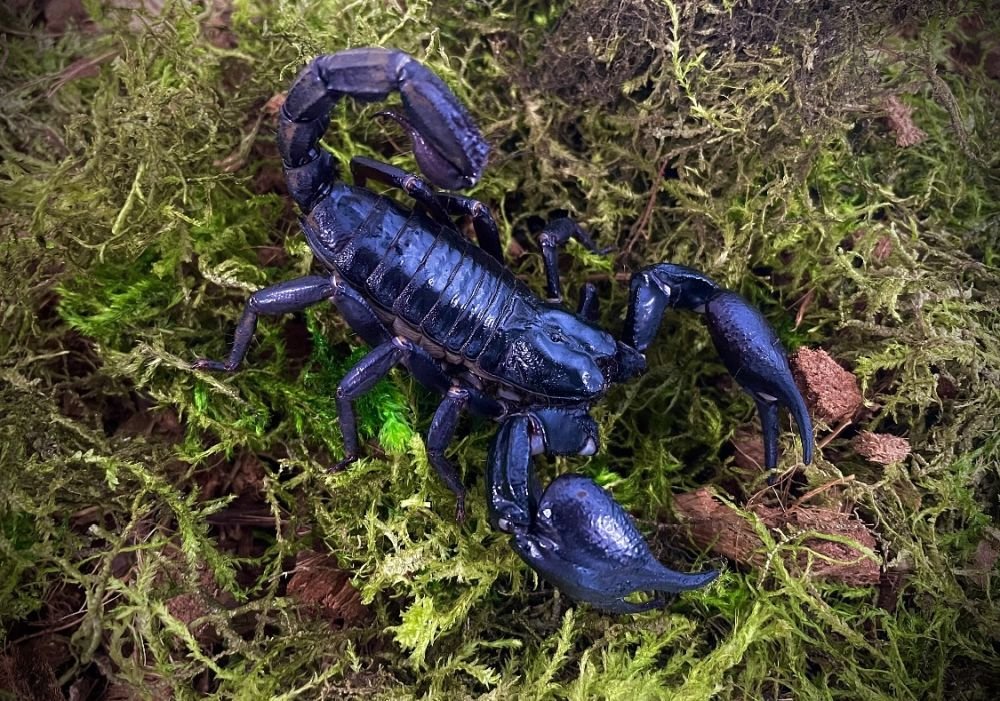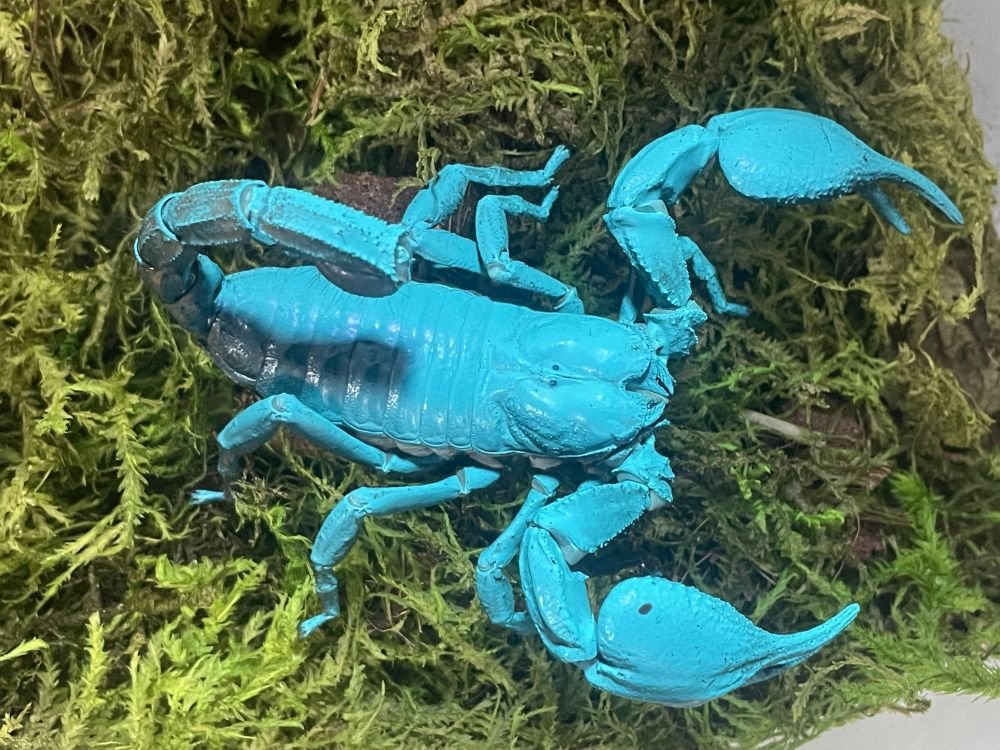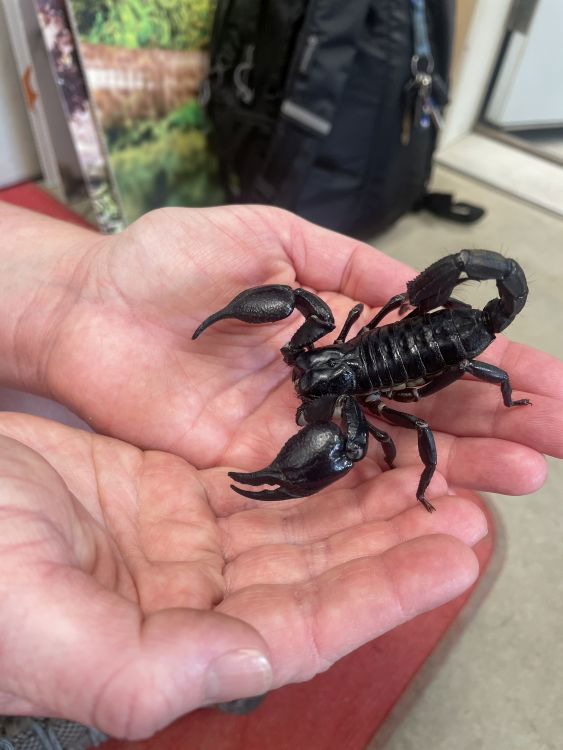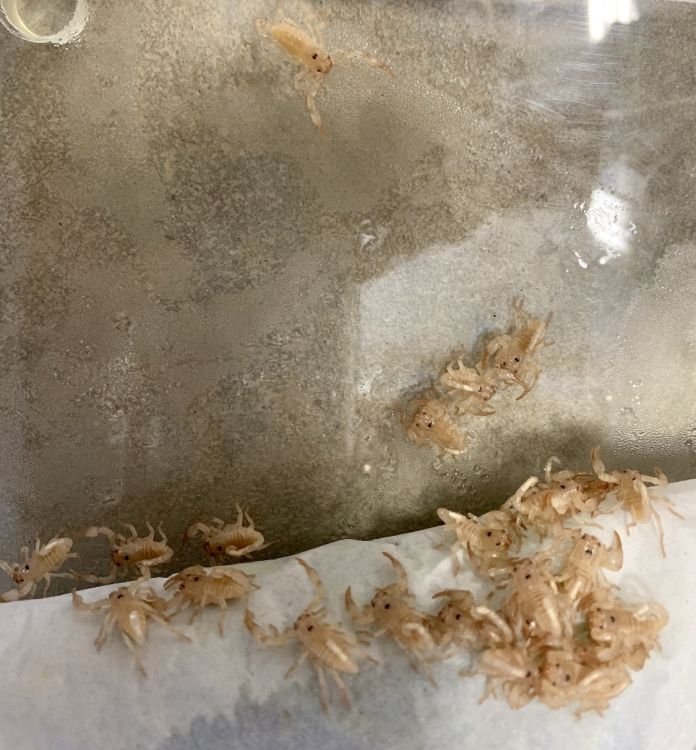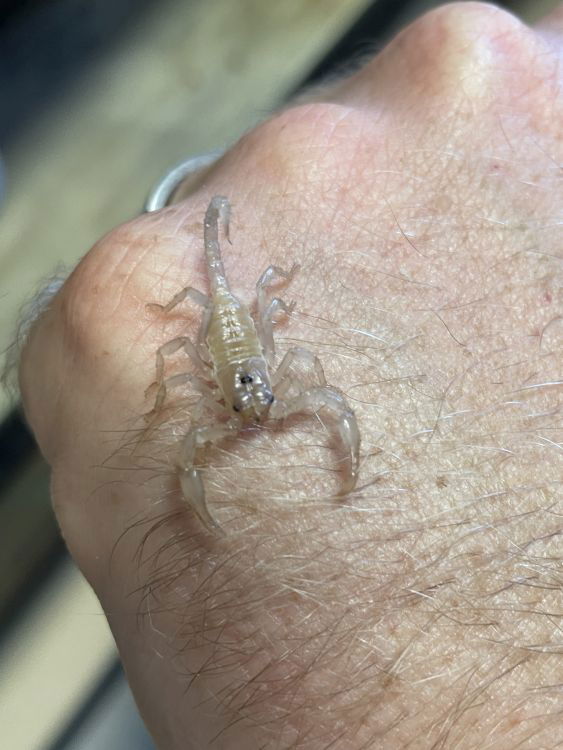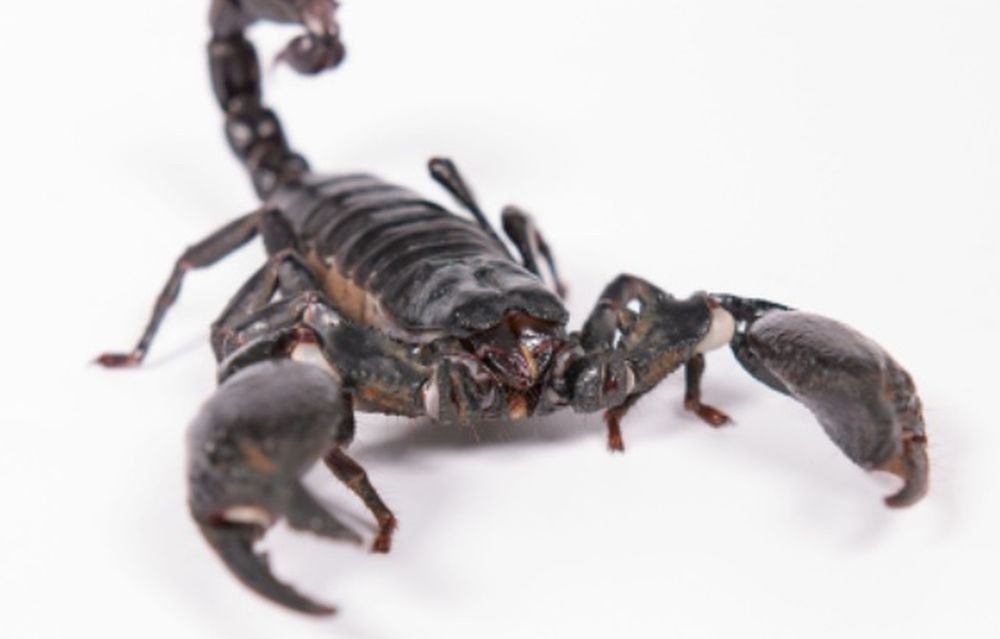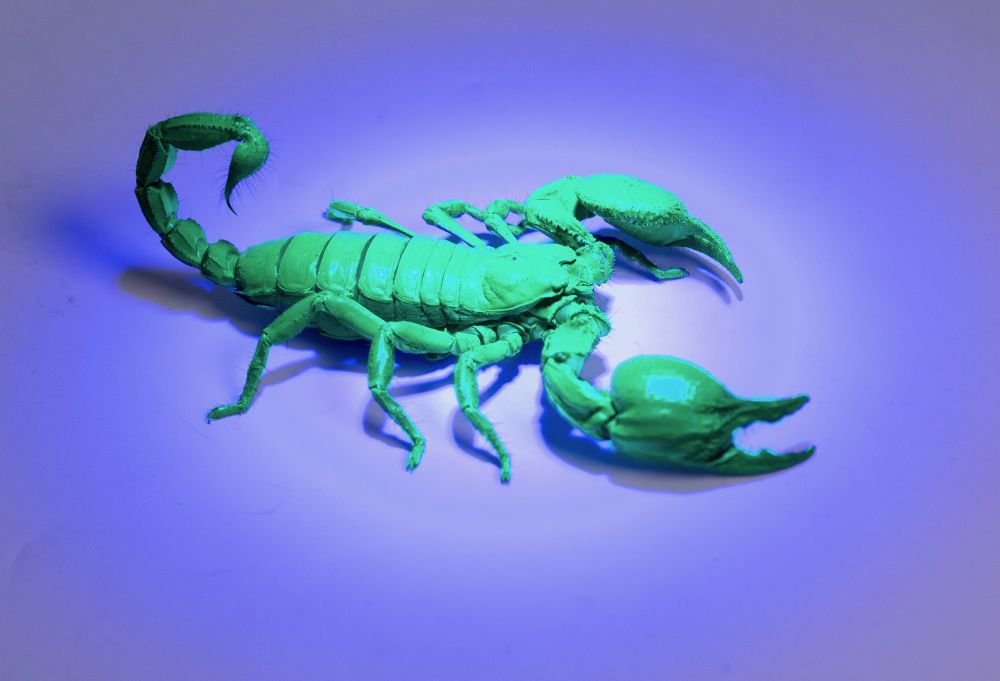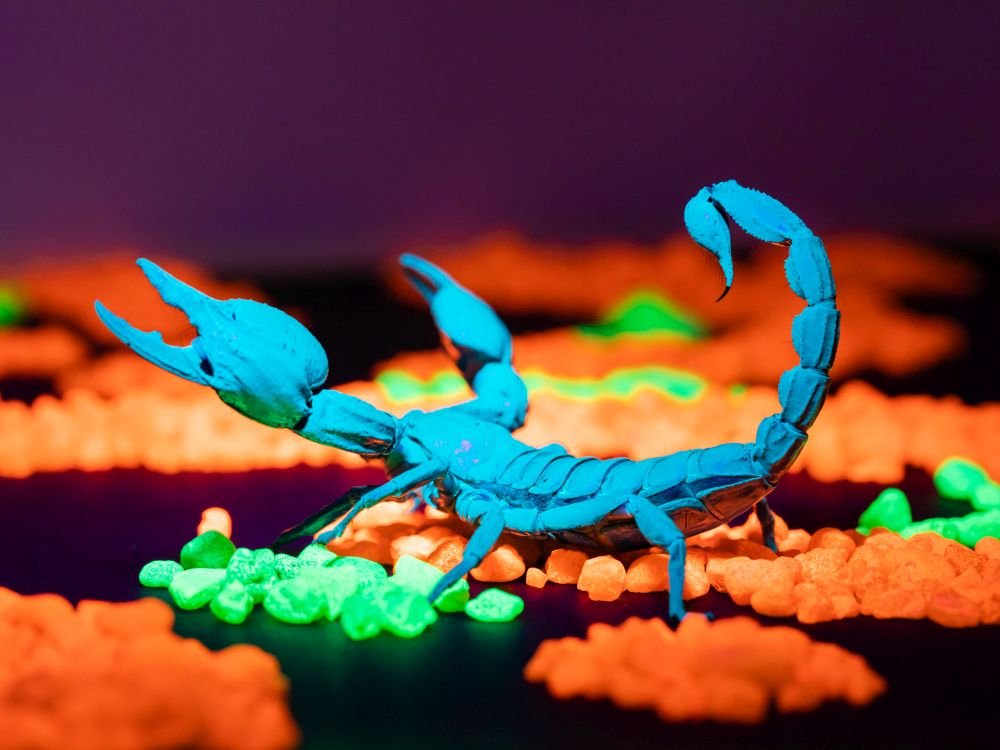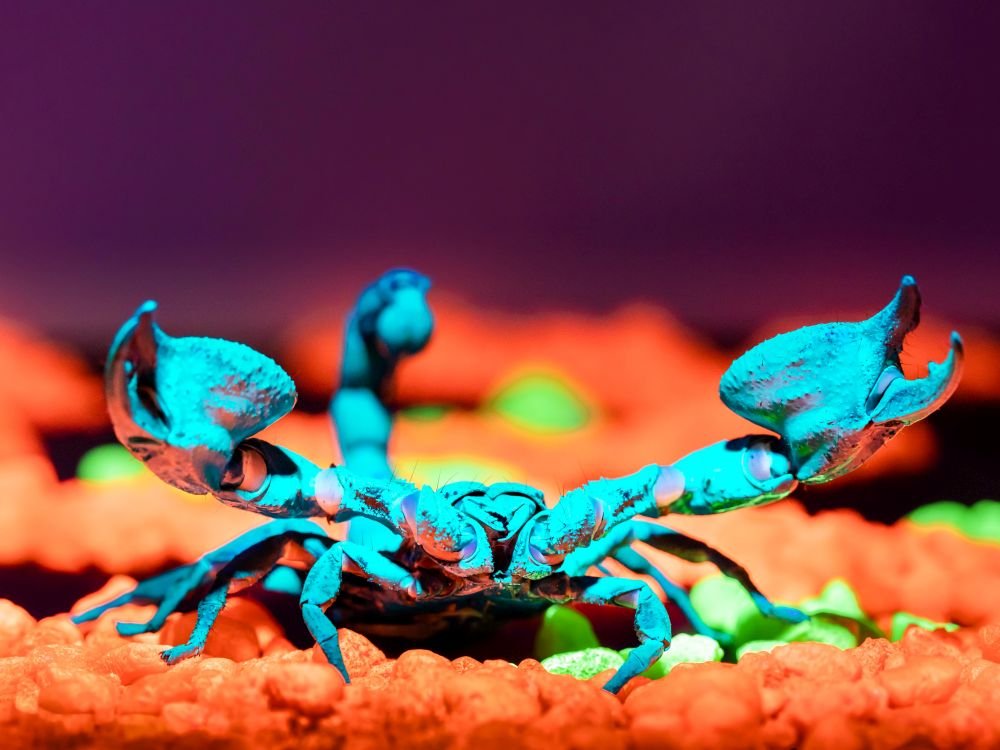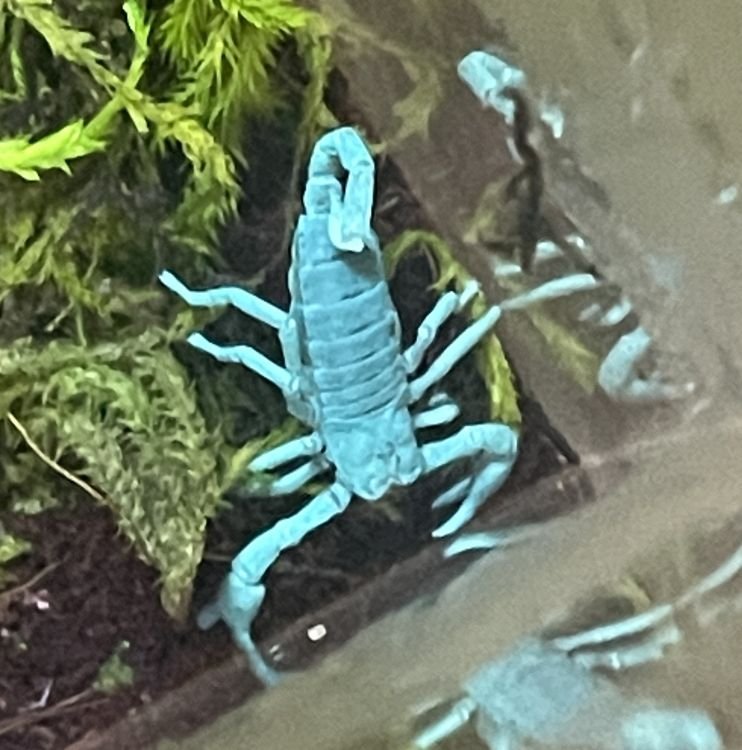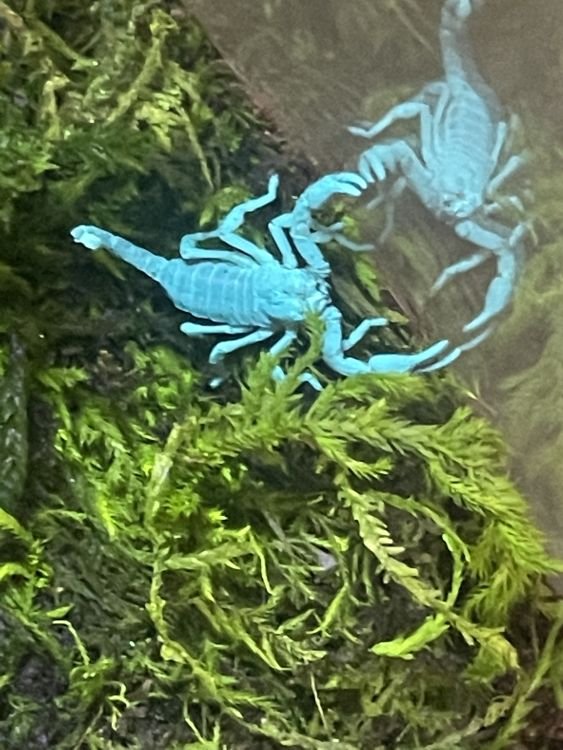Asian Forest Scorpion
With their huge claws, beady eyes, and venomous stingers, Asian forest scorpions may at first appear to be the stuff of nightmares. These eight-legged invertebrates (animals without backbones) prowl the tropical rainforests of southern Asia every night, snatching up unsuspecting prey with their massive pincers. At five inches long, they are one of the world’s largest scorpions and are often used in movies to incite fear. However, the truth is these arachnids (ah-RAK-nids; eight-legged invertebrates) are beautifully designed by the God who created “everything that creeps on the ground according to its kind” (Genesis 1:25).
Meet Jael, the Ararat Ridge Zoo’s Asian forest scorpion! She was adopted in January 2022. Despite her scary appearance, she’s actually quite friendly and allows our zookeepers to hold her. Even though Asian forest scorpions are large and have a venomous sting, they are not deadly to people. Generally, you can tell how dangerous a scorpion is by looking at the size of its pincers. Scorpions like Jael with big pincers don’t have strong venom, since they’re relying on their claws for attack and defense. Scorpions like the deathstalker of Africa with skinny pincers do have deadly venom, since their pincers are too delicate for attack or defense. Out of the 1,700 species of scorpions, only about 25 are deadly to people.
Of course, when God originally created the world, everything was very good, and all animals were vegetarian (Genesis 1:29–31). But when Adam and Eve disobeyed God, the world became cursed, and animals started eating each other (Genesis 3). In our fallen world, scorpions help keep the pests under control so our plants and crops can grow.
On June 5, 2022, zoo staff were thrilled to see Jael giving birth! They suspected she was pregnant, but scorpions can be pregnant from 5–15 months, and there was no way to be sure. Scorpions give live birth to their young, called scorplings. Jael’s 26 little scorplings then crawled onto her back where they stayed for the next 17–18 days. The babies don’t eat during this time, and often the mothers don’t either. The scorplings’ exoskeletons (the hard outer “armor” that holds invertebrates together since they don’t have bones) are white instead of black and still soft. They are vulnerable during this time, so mother scorpions fiercely defend them from threats and allow them to ride piggy-back-style. Because their exoskeletons aren’t fully developed, they also don’t glow yet.
Oh, did we forget to mention—most adult scorpions glow blue-green under ultraviolet (UV) light because of special molecules in their exoskeletons! Scientists aren’t sure exactly why scorpions glow. We know that the scorpions are aware of when they’re glowing, but we aren’t sure of the purpose. It could be a means of letting them know if it’s too bright to hunt (they also glow under the “light” of a full moon), a method of communication with other scorpions, or even a way to see better since they see blue-green the best. It’s one of God’s mysteries! If you’re ever hiking at night in scorpion territory, bring a blacklight flashlight with you to see all the scorpions glowing in your path. Check out our photos of Snuggles glowing—he was an Asian forest scorpion at the Creation Museum.
From June 17–18, 2022, Jael’s scorplings shed their exoskeletons for the first time, which is called molting. After their first molt, they climbed off their mother’s back, since their exoskeletons are now fully hardened and they’re ready to look for food. At this point, zoo staff separated them from Jael and put them into their own enclosure. Once the scorplings climb off, mother scorpions’ protective instincts end, and they will eat their babies if they stick around too long. Since the babies are all the same size, they don’t see each other as food and will happily live together as they grow. We will raise the babies for a few more weeks until they are old enough and large enough to safely be adopted into new homes. A few will go to the Creation Museum, a few will be adopted by zoo staff, and a few will be going to a local invertebrate keeper.
At the time of this blog post, the scorplings’ exoskeletons are beginning to darken and they have started glowing! Meanwhile, Jael has returned to performing in our daily animal programs, where guests can watch her glow up close. She is now the most famous animal in our zoo—the posts about her and her babies on social media got the most engagement of any of our zoo animal pictures ever posted, even the cute, fluffy ones!
Interested in learning more? Check out Visit the Zoo with Karina!
- © 2024 Answers in Genesis
- Privacy Policy
- Contact
- About

